How To Install Cabinet Crown Molding To Ceiling
Dress upwards your plain cabinets past installing crown molding to make them more than sophisticated! Give those architect grade cabinets a DIY makeover that adds class and fifty-fifty extends them to the ceiling.
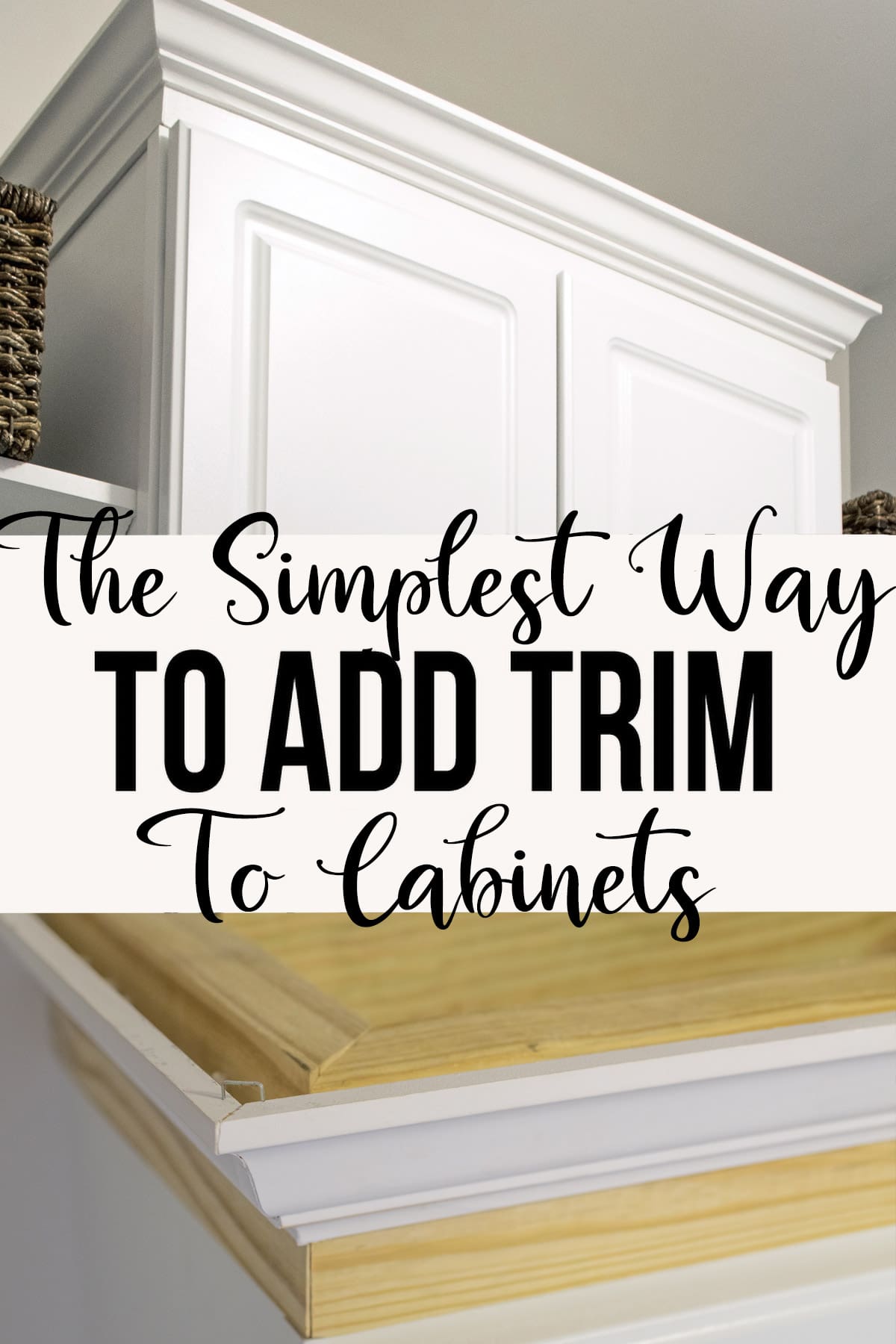
I promised a few weeks dorsum while installing laundry room cabinets that I would show you lot how nosotros added the fancy trim to the meridian. Trim is an easy style to brand cabinets look expensive and upscale. Much like crown molding makes walls look more classy, it does the same for cabinets!
You utilise the same methods for cabinets that you lot would utilise to install on your wall. I share a couple tricks to make cutting and installing it as piece of cake as possible in this post.
Supplies and Materials
- a compound miter saw (it can exist done with a miter box, but I don't recommend it)
- tape mensurate
- angle tool (actually helpful, only not required)
- straight edge
- staples
- brad nails or finishing nails
- forest filler patch
- forest for framing (if using a frame)
- fleck wood
- 50-brackets and screws (if using a frame)
- crown molding (this is commonly any thick trim cut at an bending, sometimes called moulding)
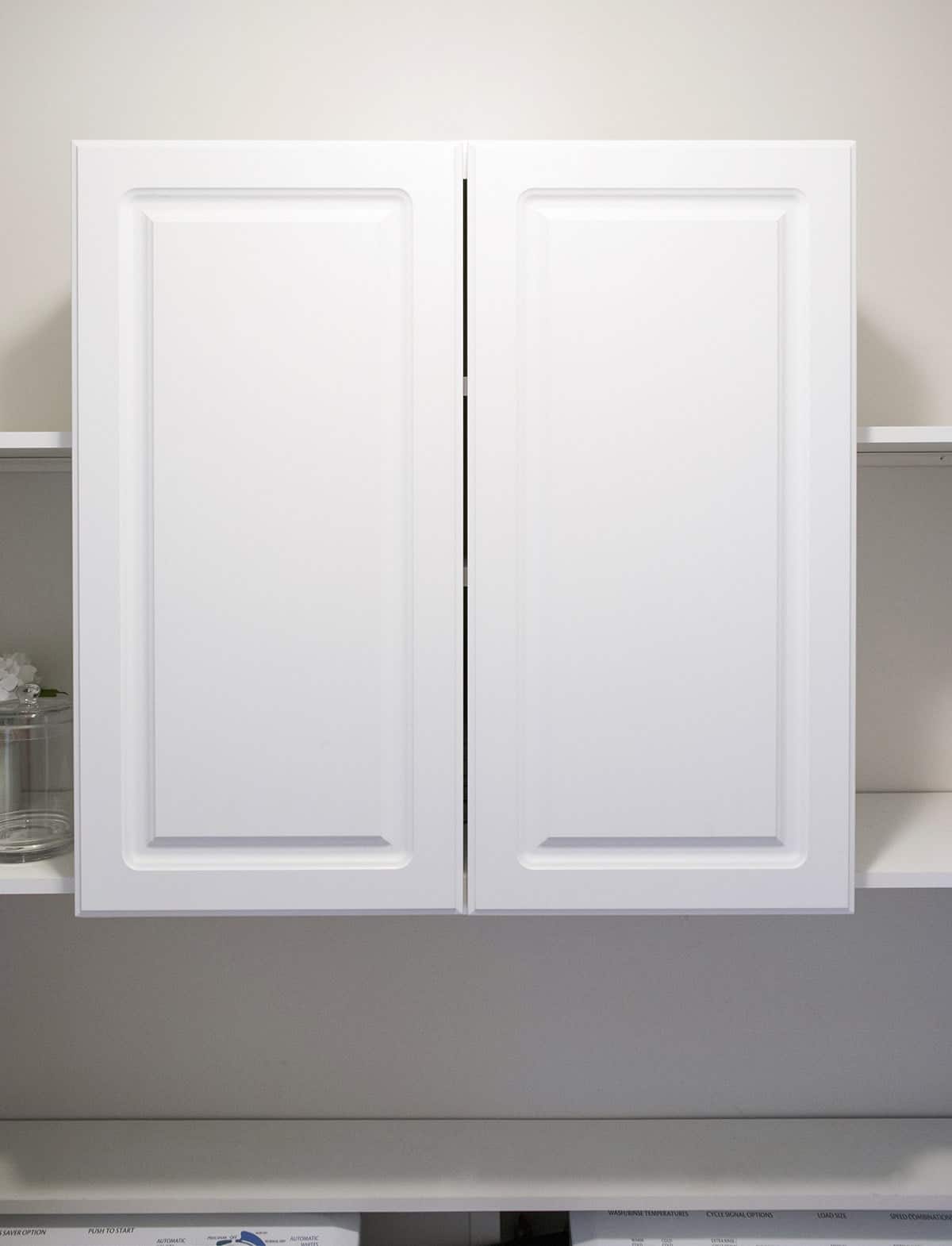
Start, we beginning with a obviously 'ole stock cabinet from Home Depot.
Stride 1a: Mark the cabinet
Utilise a direct edge (such as a long level) to mark where the moulding volition sit down on the cabinet facing. I recommend at least 1 inch of space above the line to attach the moulding.
Step 1b: Build a Frame if necessary
If you accept cabinets that don't have enough room to attach the molding straight to the cabinet, we have a solution for that! In fact, this besides works well if you have gaps or cabinets that aren't perfectly square or if you want to extend the cabinets to the ceiling.
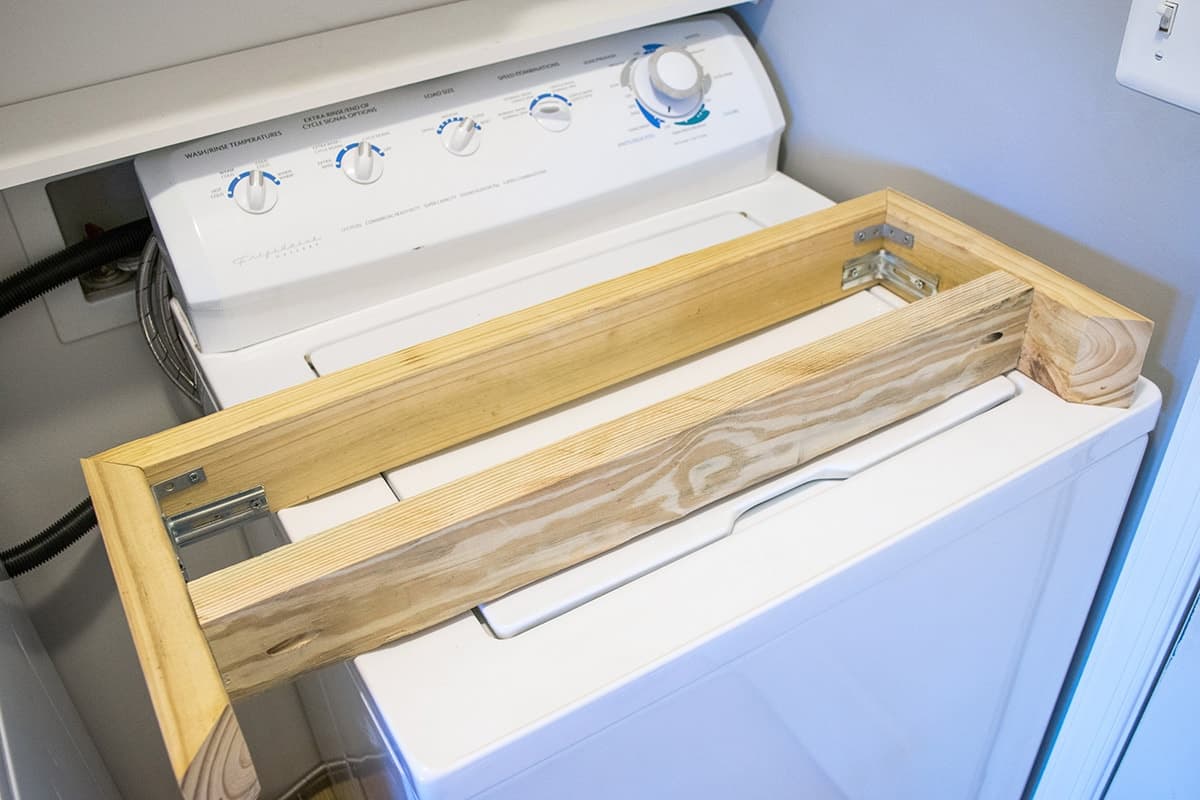
We built a frame that would sit on summit of the cabinet so that we could attach the trim granting room for the doors to open up. The frame measures the verbal aforementioned size equally the sides and forepart of the chiffonier. We used L-brackets to put it together. The cross brace (heart of the board) keeps the side boards from bowing.
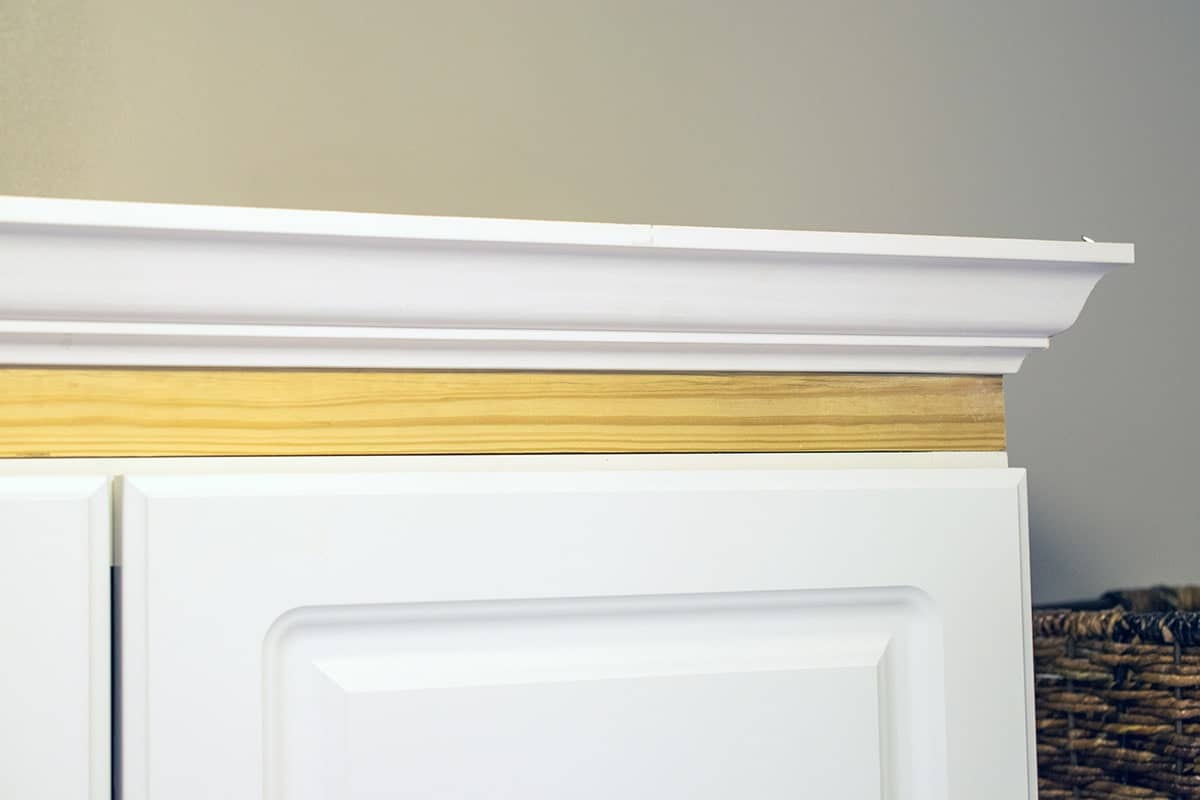
Run across how it just sits nicely up there? It isn't even fastened! I did mention that this was the easiest manner to install cabinet trim on cabinets, right? The frame meant that we could install the trim without having to the work precariously balancing on a ladder.
Note: Our cabinet has almost no lip, then the molding is placed higher on the frame. You lot can move it as low or high on the frame as you similar. Once painted, this will look perfectly natural. It's a chip trickier with stain, but you tin can match the wood species and stain.
Step 2: Measure and Cut
The matter about installing cabinet crown molding is that you can't assume that any angle will be perfectly 45 degrees. I find that belongings the piece of trim upwards to the chiffonier and marker where it needs to be cut or using an angle jig is the well-nigh effective way.
Use pieces that are generously longer than each piece needs to be — giving you enough to work with but allowing you to work with manageably sized pieces.
- Start on 1 end where the molding meets the wall and work around one corner at a time.
- I discover that inside corners should be prioritized (see beneath for what an inside corner is).
- Cut both pieces before attaching.
- For exterior corners, I make the first cuts usually well-nigh 1/16 inch longer than my pencil marks. This allows for room around the curve and gives a piffling room for testing the angle.
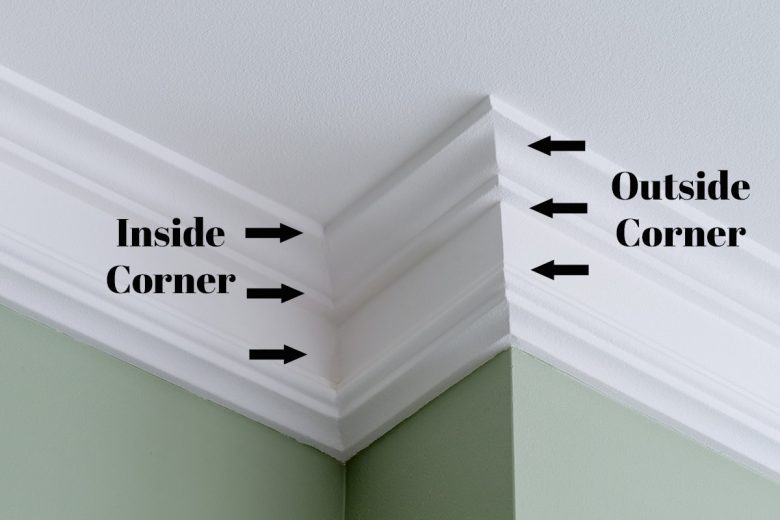
How to Cut Crown Molding
To cut crown molding, yous tin can either use a compound mitre saw or a handheld box. I am currently working on a post (and video) to show how to cutting crown molding, only for now, this is one of the better videos that I could detect demonstrating the technique.
A few tips:
- Never assume your angles are perfectly 90 degrees. Marker them before cutting.
- For exterior corners, I cut about 1/xvi longer than the measurement. It simply works improve that way for me.
- If you have trouble belongings the trim against the fence, cutting a bit piece of wood in a triangle that is the size of your gap.
- Mostly speaking, I don't do the "cut the leading edge" play a joke on. I usually cut the within corners first (one at 45 and then mark the reverse piece for the leftover angle), and then work outward from that corner.
The video below gives some handy tips for how to cut the corners.
To attach the trim after cutting, we used wood gum and nailed across the bottom where the boards meets the frame.
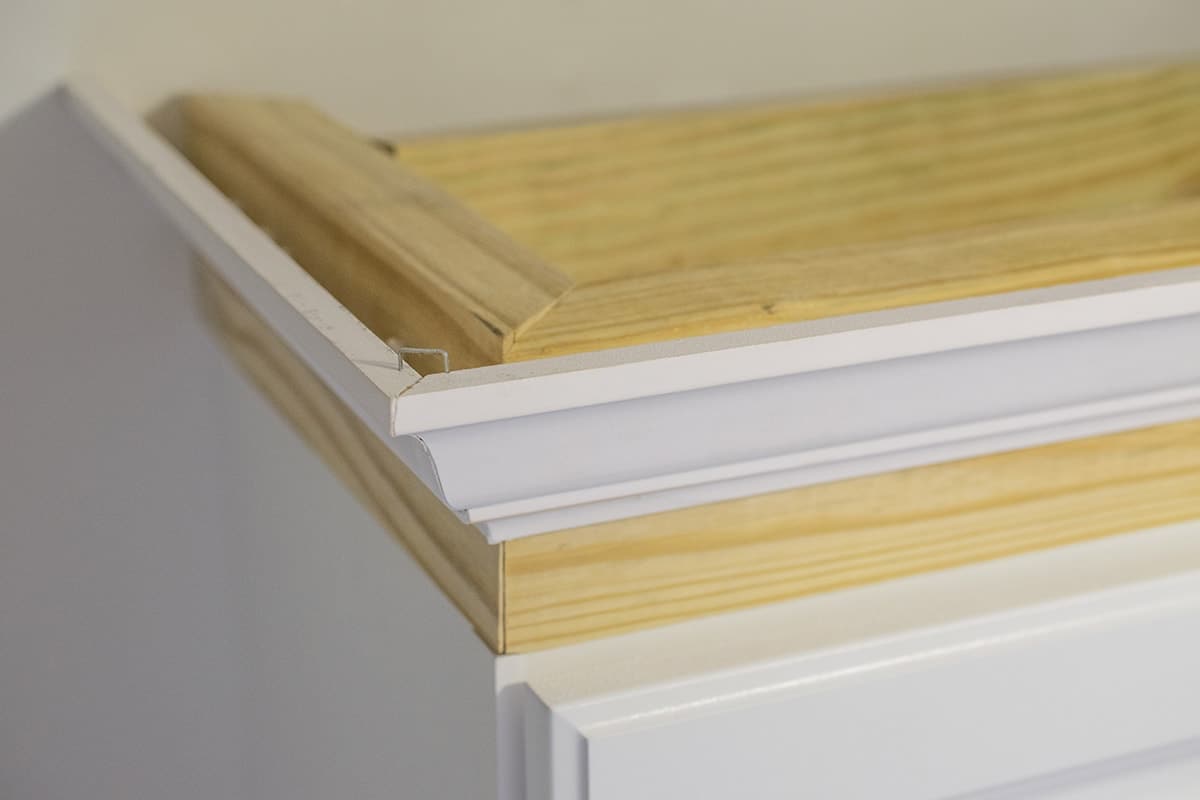
Since the top corners are floating (i.due east. not nailed to a wall), we go on tight corners by stapling them and nailing the opposing pieces of trim into each other. Be careful to aim the nail correctly then it doesn't pierce through the visible part.
I then patched the blast holes with my favorite wood filler and painted to match the chiffonier.
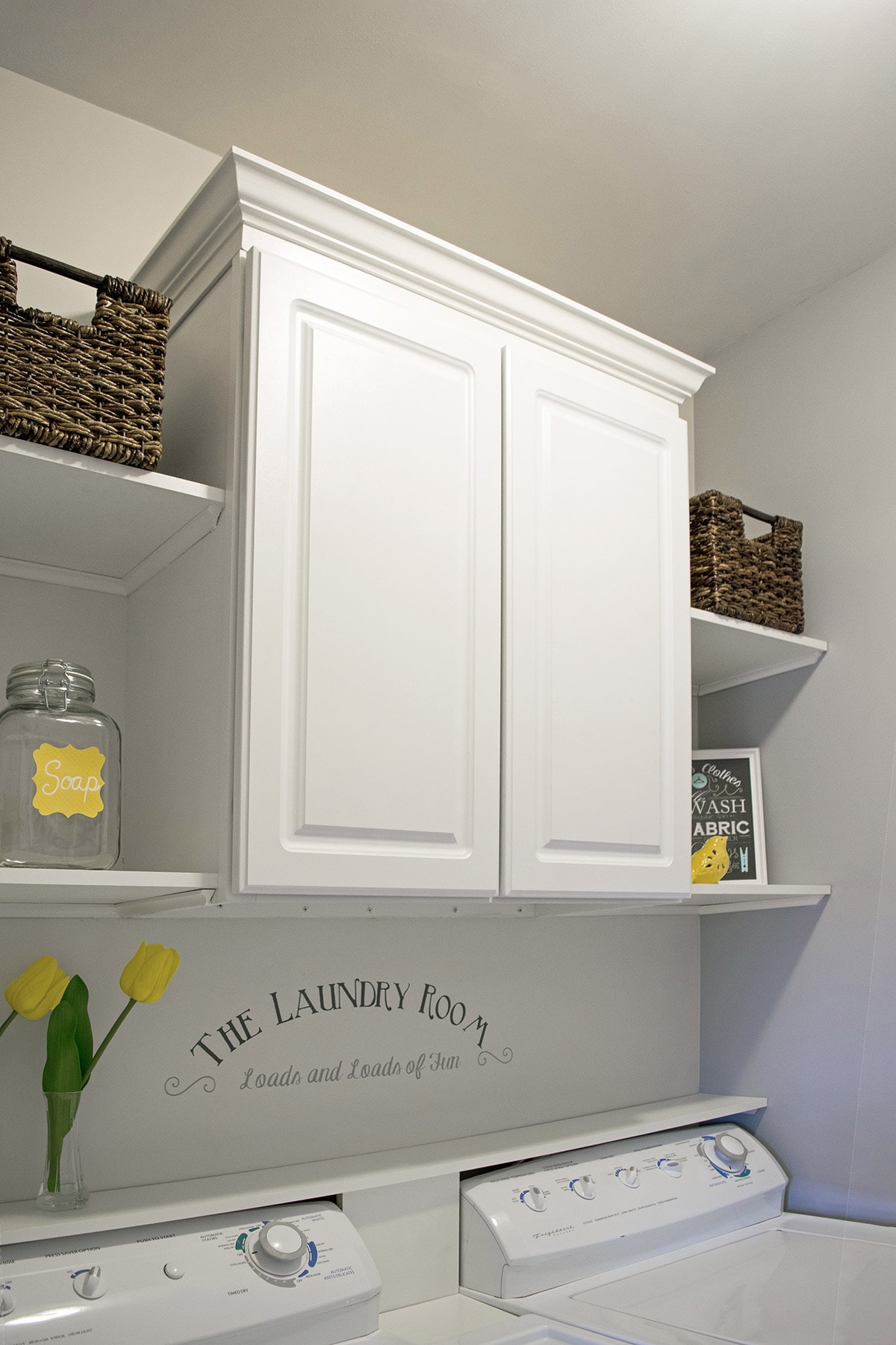
Information technology honestly looks like it came like that. Adding the cabinet trim is a uncomplicated project and you don't accept to exist a cabinet maker to add some class to your laundry room or kitchen.
FAQs
How much does information technology cost to install crown molding on cabinets?
The average cost to install crown molding is $7 to $12 per linear foot depending on the materials chosen.
How difficult is it to install crown molding?
The hardest part of installing crown molding is cutting the corners, particularly the exterior corners. The molding attaches at a mitered angle.
What is the purpose of crown molding?
Crown molding is a decorative and architectural element unremarkably consisting of layered trim work. It is used to cap cabinets, columns, and interior walls. It's simply used at the top of a room, and, thus, described as a "crown".
LOOKING FOR MORE SIMPLE Ways TO Meliorate YOUR HOME?
- Repair and Replace Broken Window Sills
- The Easiest Mode to Get Cute Baseboards
- Building A Custom Closet
- How to Pigment Former Kitchen Cabinets

Sign upwardly beneath to receive updates including free printables, organisation tips, home comeback projects, recipes and more!
More DIY Trim Projects
-
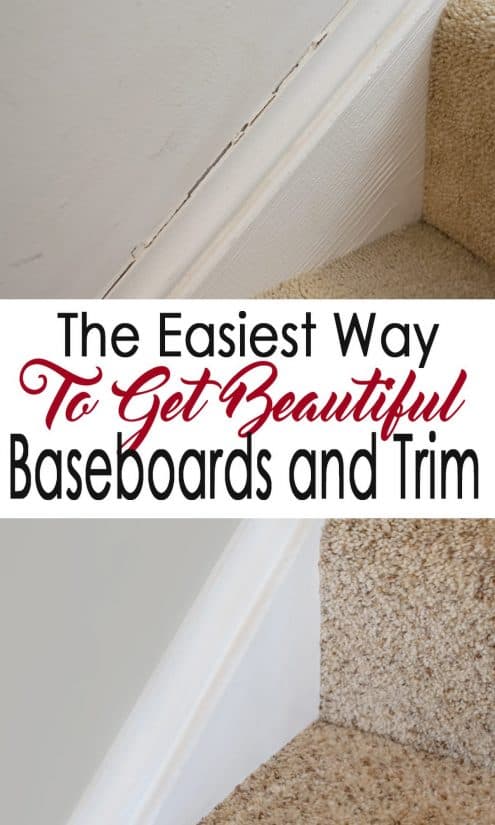
Beautiful Baseboards -

Replacing Window Trim -

Laundry Room Makeover -
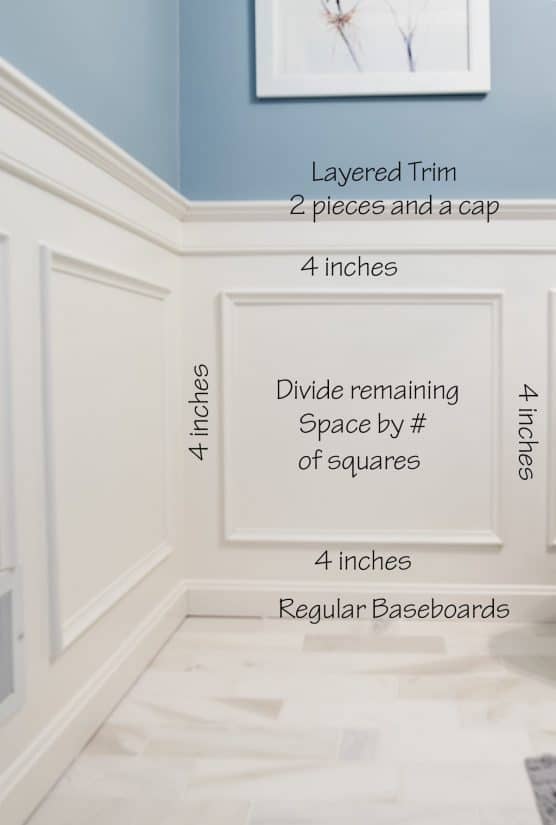
Installing Wainsccoting
PS I honey seeing your creations! Exist sure to accept a photograph and tag#cravingcreative on Instagram! You can alsostay in touch with me through post-obit me on Instagram, Pinterest, and Subscribing to the Newsletter!
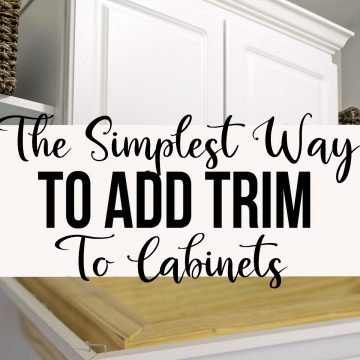
-
Tape Measure out
-
Straight Border or Level
- Staples or Brad Nails
- Wood Filler
- Wall Spackle
- Crown Molding Whatever trim yous like
If Using a Pre-Built Frame
- L-brackets
- Screws
- 2×4 for framing made of appropriate wood
-
Use a straight border (such as a long level) to mark where the crown molding will sit down on the cabinet facing. I recommend at least 1 inch of infinite higher up the line to attach the trim. If y'all have cabinets that don't have plenty room to attach directly, build a frame to sit on top of the cabinet. The frame measures the exact same size as the sides and front of the cabinet.
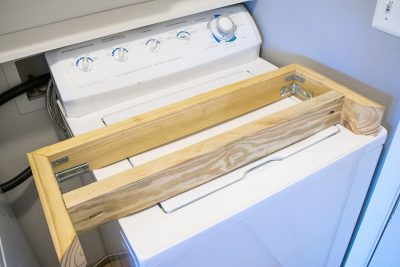
-
Measure out or hold the piece of trim up to the chiffonier and mark the length for cut.

-
Starting time on 1 end where the molding meets the wall and work around 1 corner at a time. Cut both pieces before attaching. For outside corners, I make the start cuts commonly virtually 1/16 inch longer than my pencil marks. This allows for room around the curve and gives a little room for testing the angle.
-
To adhere subsequently cutting, use wood gum and nailed beyond the bottom where the boards meets the frame. Nailing at slight angles will assistance with holding information technology tighter and resisting pulling away.
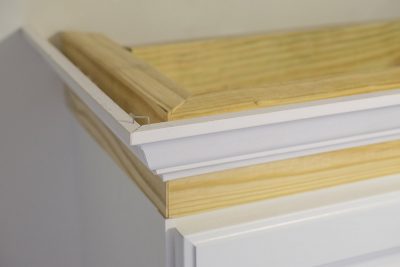
-
Paint or stain the molding to lucifer the cabinets.
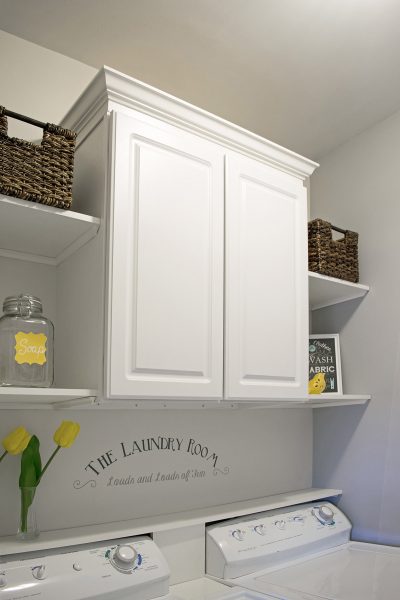
Tips for Cut
Reader Interactions
Source: https://www.cravingsomecreativity.com/adding-moulding-to-a-stock-cabinet/
Posted by: kwansuicharcon54.blogspot.com


0 Response to "How To Install Cabinet Crown Molding To Ceiling"
Post a Comment